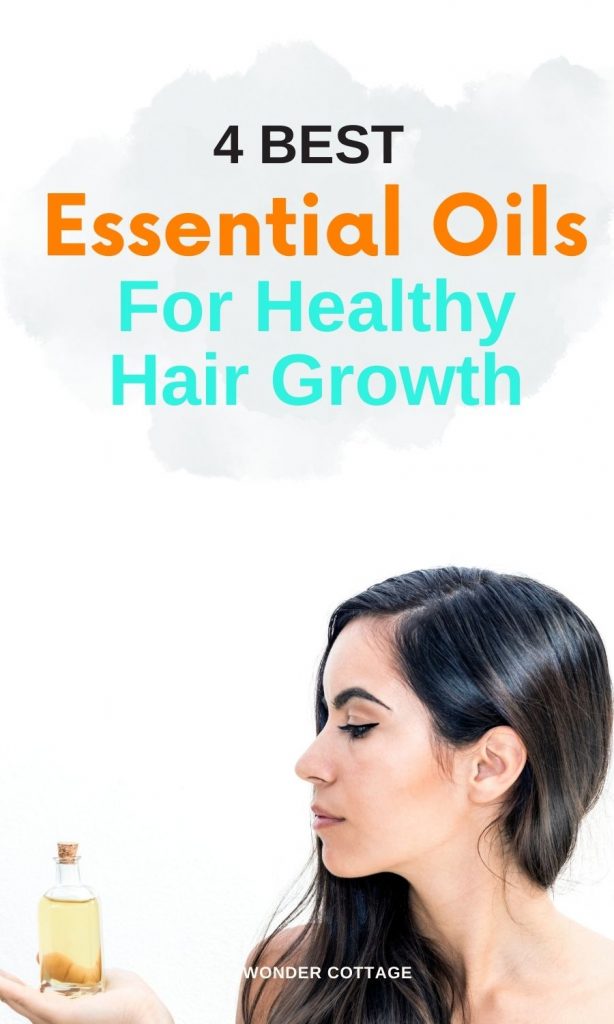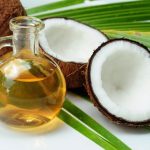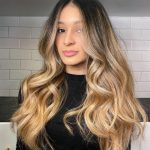Oils are essential for hair growth and applying oil to your hair is an excellent way to minimize hair loss. Essential oils prevent hair from drying out and keep it shiny. It fortifies the hair shaft, which is visible on the hair surface in curly hair.
These essential oils are extracted from natural plants through evaporation or distillation. These essential oils have a pleasant scent and can help to improve hair health by providing shine and strength.
But oils can have some risks and complications. They can cause skin irritation and allergic reactions especially to those with sensitive skin. So you have to make sure to find the best oil for you.

4 oils for hair
Tea tree oil
Tea tree oil contains antibacterial, antiviral, antifungal, and anti-inflammatory properties that can aid in the healing of ingrown hairs that produce bumps or pimples, as well as battle dandruff-causing fungus and prevent infection.
Because of its antifungal and antibacterial characteristics, tea tree oil can help with an itchy scalp. It moisturizes and restores the skin’s surface while also clearing congested pores on the scalp.
It’s also a wonderful approach to get rid of hair lice because it includes terpinen-4-ol and 1, 8-cineol which have insecticidal properties. It can kill adult lice and keep lice eggs from forming in the hair.
How to use tea tree oil for hair
Adding tea tree oil to your shampoo can boost its cleansing efficiency while also giving your hair a bouncy, shinier, and healthier appearance.
If you experience scalp itches and flakes, apply tea tree oil two (2) or three (3) times each week. If your itchy scalp has calmed down, you should reduce it to once a week.
Never use tea tree oil directly to your scalp without first diluting it. Combine it with coconut oil or another carrier oil and apply it for fifteen (15) minutes.
To quickly wash the oil mixture out of your hair, dilute it with aloe vera or apple cider vinegar. Tea tree oil promotes hair growth by lengthening and thickening it.
Jojoba oil
Jojoba is a plant that is predominantly found in North America. It is a perennial plant that grows in severe desert climates and produces a nut with numerous medicinal benefits.
Jojoba oil is mild and can be used with other essential oils as a carrier oil. It can also be used as a moisturizer on its own.
Because jojoba oil is a humectant and works to attract water on the top layer of the skin, it helps to prevent dandruff and dry or itchy scalp. Jojoba oil can be applied directly to the hair.
How to use jojoba oil for hair
Warm the oil in a clean saucepan and apply one (1) spoonful for short hair and two (2) teaspoons for long hair to the scalp for twenty (20) minutes before shampooing, conditioning, and rinsing.
It can also be mixed with other hair care products such as shampoos and conditioners. For products, three (3) or five (5) drops are sufficient.
Purchase hair products that contain jojoba oil. Jojoba oil helps to strengthen hair, reduce hair loss, and increase hair thickness.
Related Posts
Peppermint oil
Peppermint oils have been demonstrated in studies to be more helpful for hair growth, improved scalp thickness, and the number of hair follicles.
Menthol is a chemical found in peppermint. Menthol causes blood vessels to dilate, enhancing circulation and possibly improving hair growth. Hair loss is caused by a lack of blood supply to the hair follicles.
Hair loss can be prevented by using peppermint oil, which includes menthol. Peppermint gets its flavor and chilling effect from menthol.
It has a pleasant aroma and is found in many shampoos and other hair products. Peppermint relieves hair dryness, irritation, and other scalp issues.
How to use peppermint oil for hair
Directly massaging peppermint oil into the scalp after diluting it with carrier oils will help prevent hair loss. This should take between twenty (20) and thirty (30) minutes.
Then, use shampoo to completely cleanse your hair. Also, peppermint oils are okay to keep in hair overnight and then wash off the next day.
Use about five (5) drops of the oil as you normally would and reap the benefits.

Rosemary oil
Rosemary oils have the ability to reverse some of the most frequent types of hair loss. It is capable of regrowing hair. Rosemary oil, like peppermint oil, improves circulation.
This keeps hair follicles from drying out and falling out due to a lack of blood flow. It can also be used to prevent premature graying and dandruff, as well as to relieve dry and itchy scalp.
Rosemary contains an active component that heals tissues and nerve damage. This revitalizes the scalp’s nerves and promotes hair growth.
How to use rosemary oil for hair
Massage five (5) drops of rosemary oil combined with a carrier oil (coconut oil) into the scalp for five (5) to ten (10) minutes, then rinse.
It can be added to shampoo or conditioner (five (5) drops) and washed into the hair on a daily basis. Add two (2) or three (3) drops to hair products and rub a small amount in your hand before using.
Tips for using essential oils for hair
Essential oils should never be used on hair or skin by themselves. Before applying any essential oils, perform a patch test to ensure that you are not allergic to them.
To do a patch test, apply three (3) or four (4) drops of the essential oil to the region, cover with a bandage, and leave for 24 hours. Remove the bandage and check for redness, hives, or irritations; if there are none, you are safe.
Add them to your leave-in conditioners, creams, or spray bottles after diluting them with carrier oils.
Avoid getting essential oils in your eyes and using them on babies and children. If you come into touch with your eyes, immediately rinse them with cold water.
Too much oil in the hair can lead to buildup. When oils become absorbed into your scalp, they might cause infections. Maintain consistent hair-washing schedules to avoid unnecessary oil buildup.





